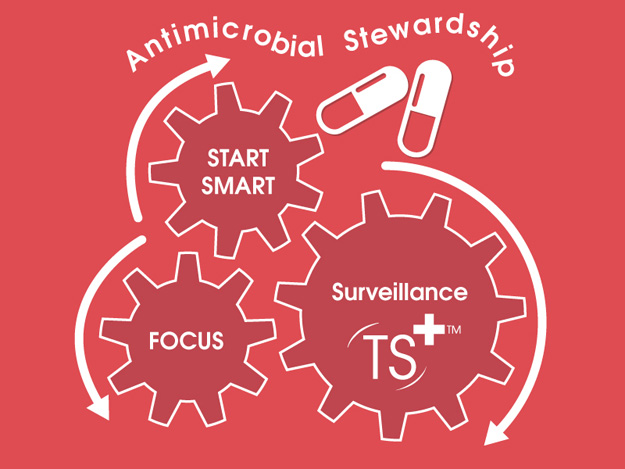START SMART
Start Smart is the term used to describe the initial prescribing of antibiotics and is a part of the ‘Start Smart then Focus’ campaign to reduce antibiotic resistance.
It involves a number of key steps including:
- Starting antibiotics only if there is clinical evidence of a bacterial infection and ensuring the antibiotic prescribed meets with local prescribing policies or drug formularies for the infection being treated.
- Ensuring the patient has a septic screen to include blood cultures and any relevant swabs from wounds, a urine sample a sample of sputum etc. before starting antibiotics.
- The indication or reason for the antibiotic should be recorded and the drug name, dose, frequency and route detailed on the prescription.
- Ensure antibiotics are given promptly once prescribed (Within 1 hour for severe sepsis).
FOCUS
Focus is the term used to describe the re-assessment of the patient and antibiotic prescribed once results of tests and investigations are available. It is a part of the ‘Start Smart then Focus’ campaign to reduce antimicrobial resistance.
The key components of Focus include:
The need for the antibiotic should be reviewed within 48 hours of starting antibiotics.
The clinical diagnosis including laboratory/radiology results should be reviewed.
Following on from this review, one of five options below are selected and documented in the patient’s drug Cardex.
- Stop the antibiotic (the patient has no evidence of a bacterial infection or an alternative diagnosis is made.
- Switch from an (IV) intravenous to an oral antibiotic(s)
- Change the antibiotic(s) to either a more appropriate, narrower spectrum antibiotic or an alternative based on the sensitivity pattern of the organism.
- Continue the current antibiotic therapy with a further review scheduled for 24 hours later.
- Arrange for the patient to have outpatient parenteral antibiotic therapy (OPAT).
